My friend Nicole DiMaggio sent us these photos of adult Magicicadas taken in Iselin NJ. The emergence is just getting started in New Jersey, and will really kick off next Tuesday when the temps hit the 80s.
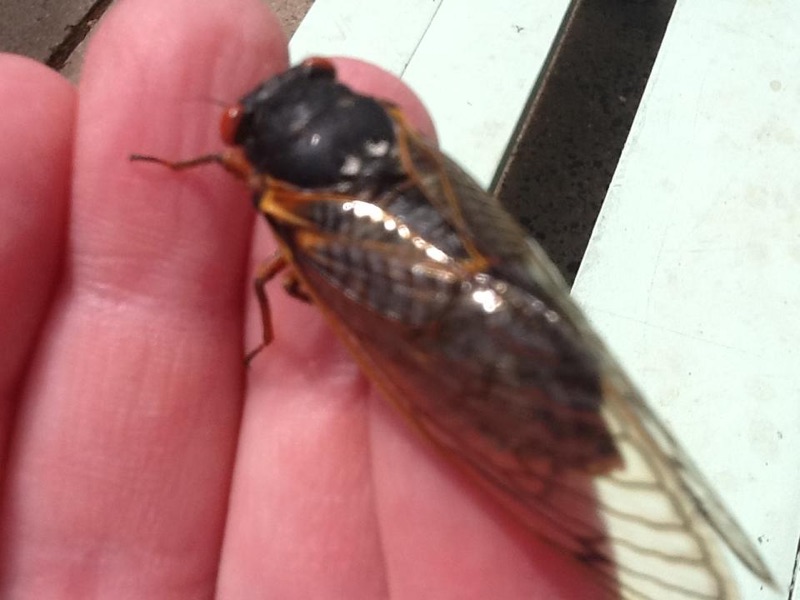
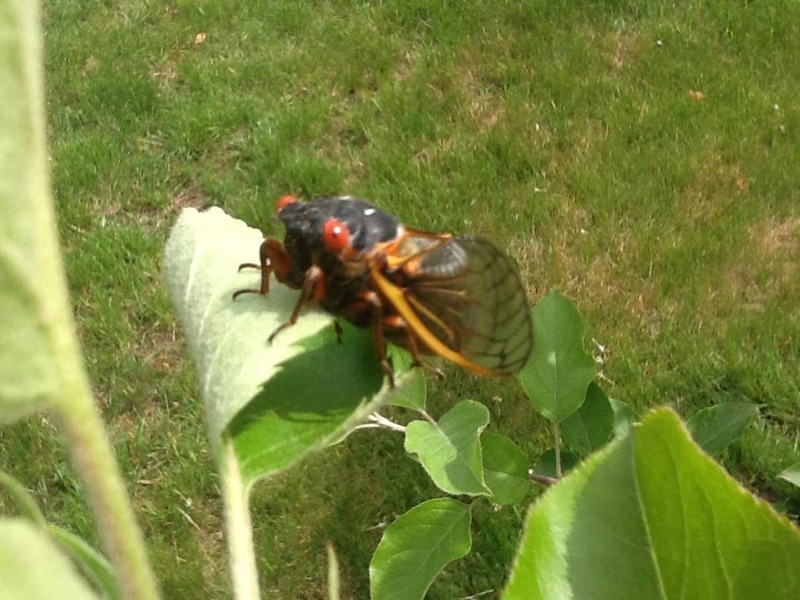
Magicicada periodical cicada Broods.
My friend Nicole DiMaggio sent us these photos of adult Magicicadas taken in Iselin NJ. The emergence is just getting started in New Jersey, and will really kick off next Tuesday when the temps hit the 80s.


These photos of adult Magicicada cicadas were taken in Westfield, NJ by Jim Occi on May 16th.
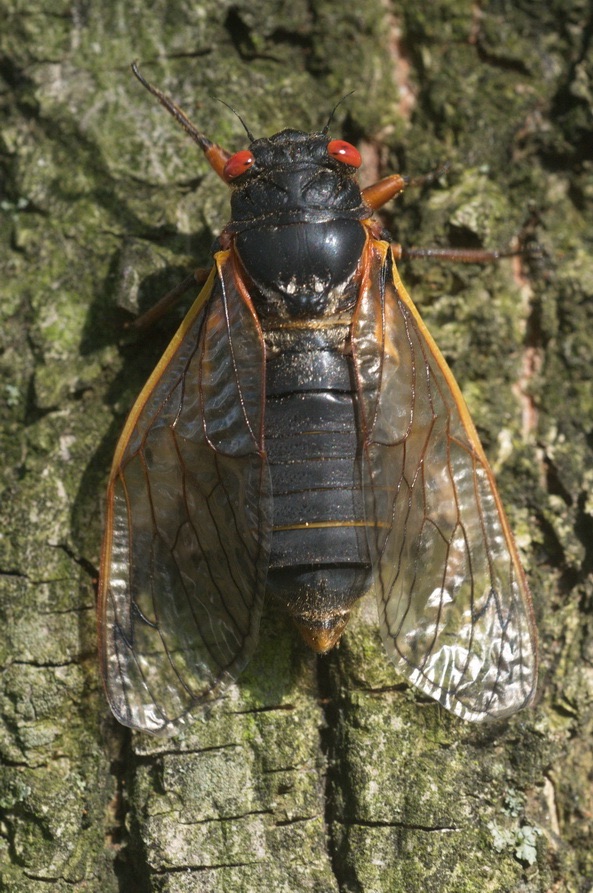
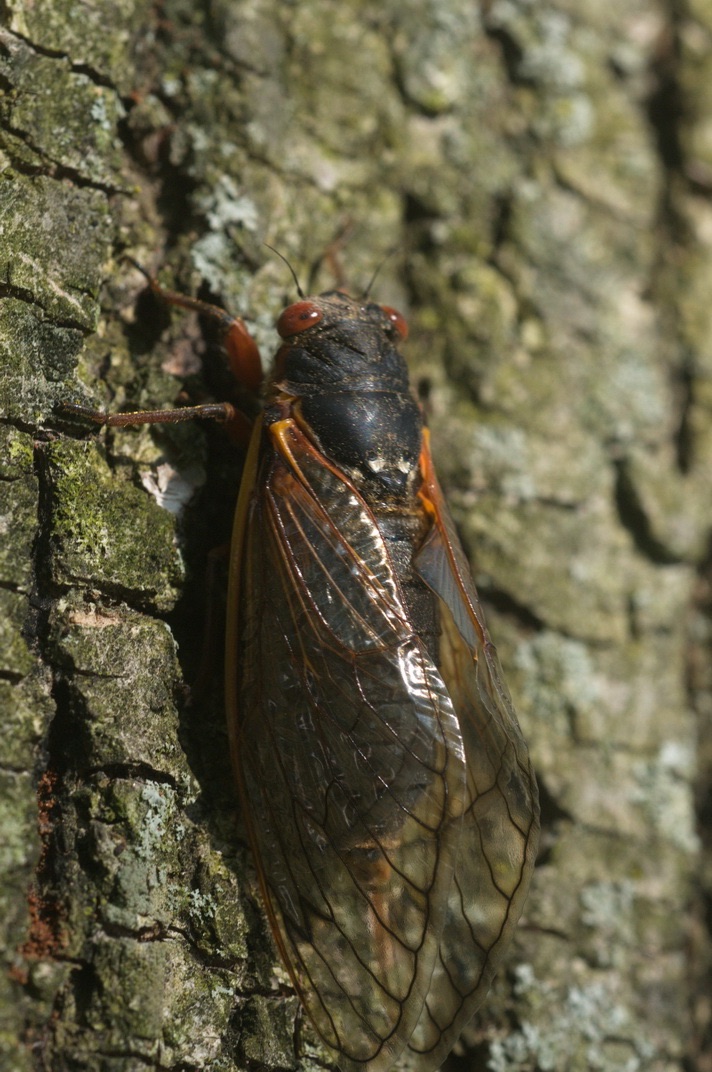
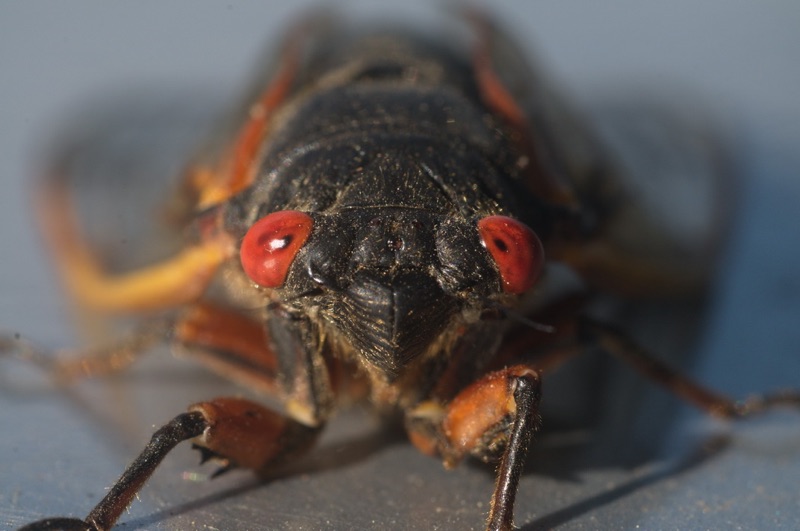
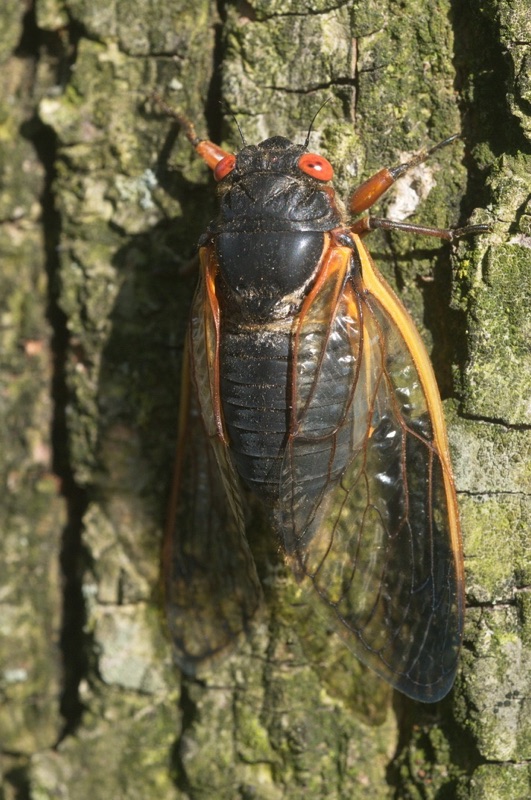
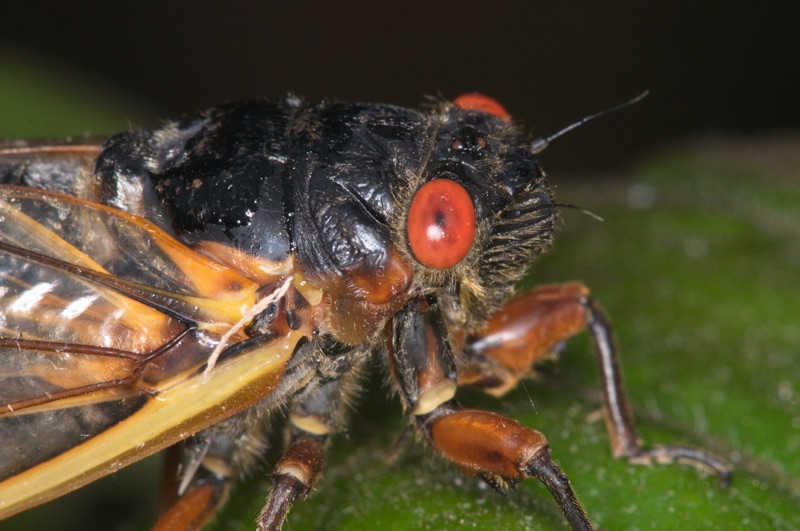
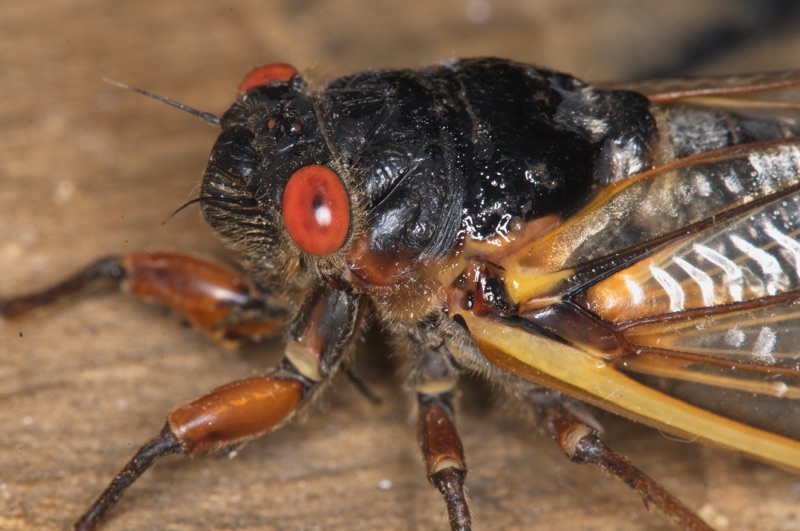
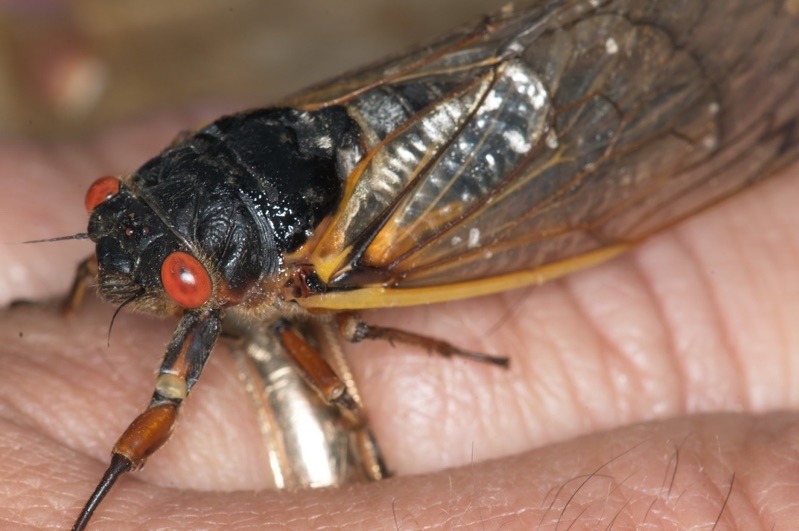
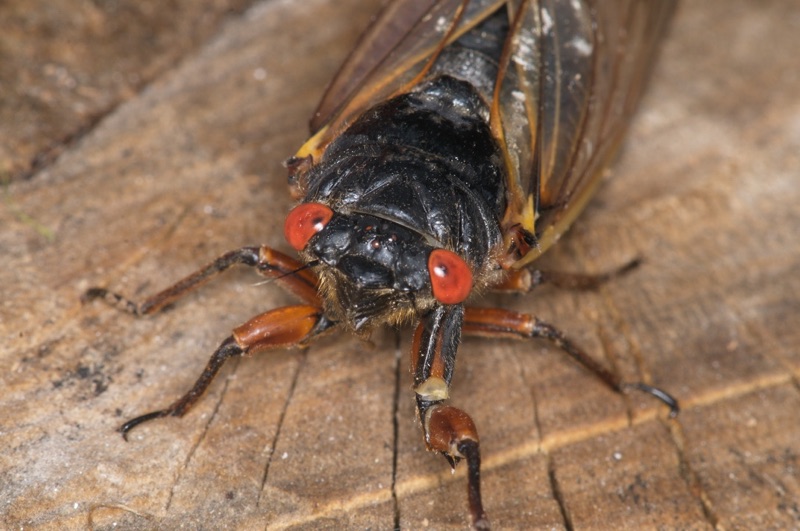
This photo is particularly interesting as the cicadas’s wings were damaged during the ecdysis (molting) process and its tymbal (the ribbed structure that makes the cicada’s sound) is clearly exposed:
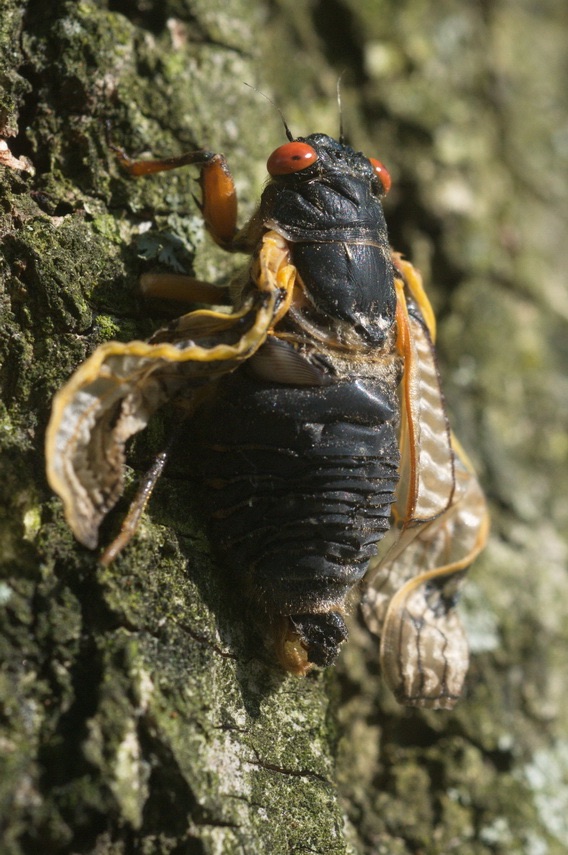
Nature photographer Candice Trimble of Front Royal, Va, sent us these Brood II Magicicada photos.
An adult Magicicada septendecim (Linnaeus 1758):
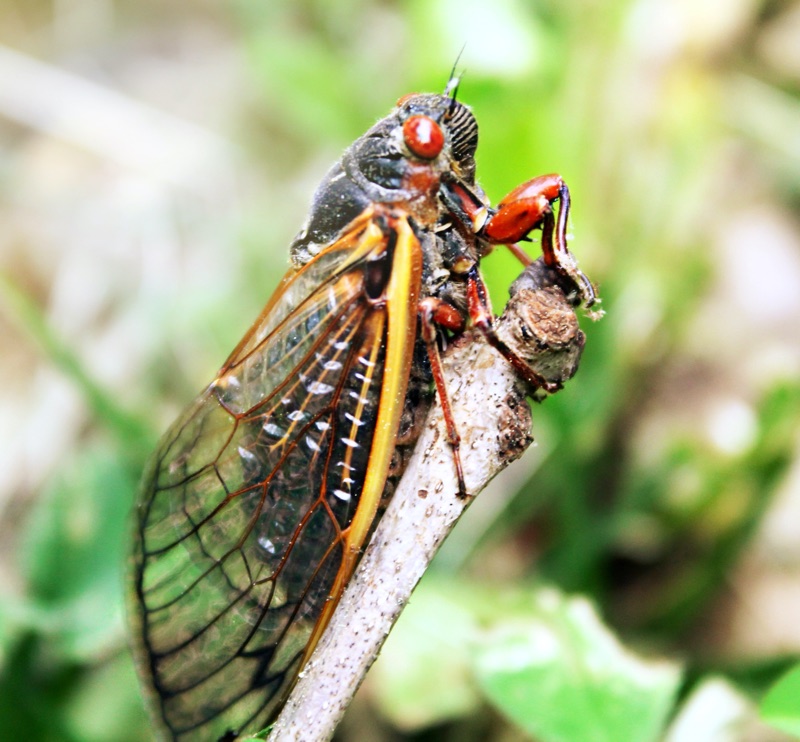
Magicicada exuvia (shell):
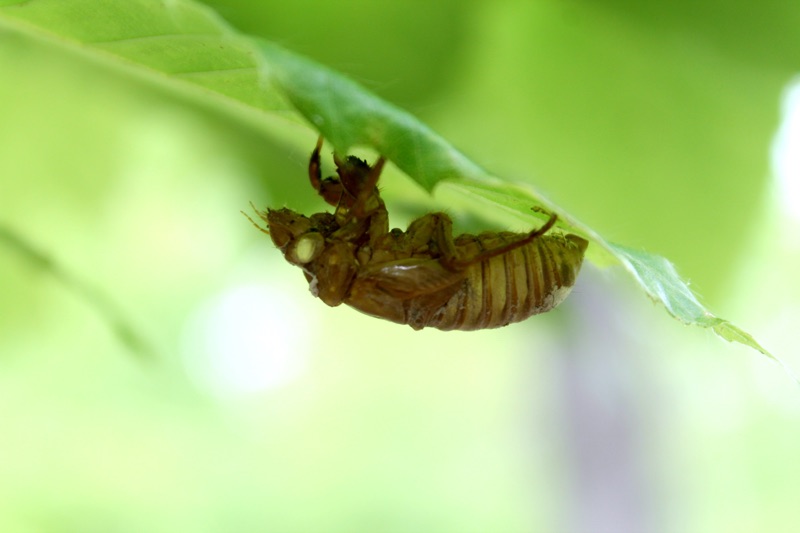
Magicicada adult (probably an M. septendecim):
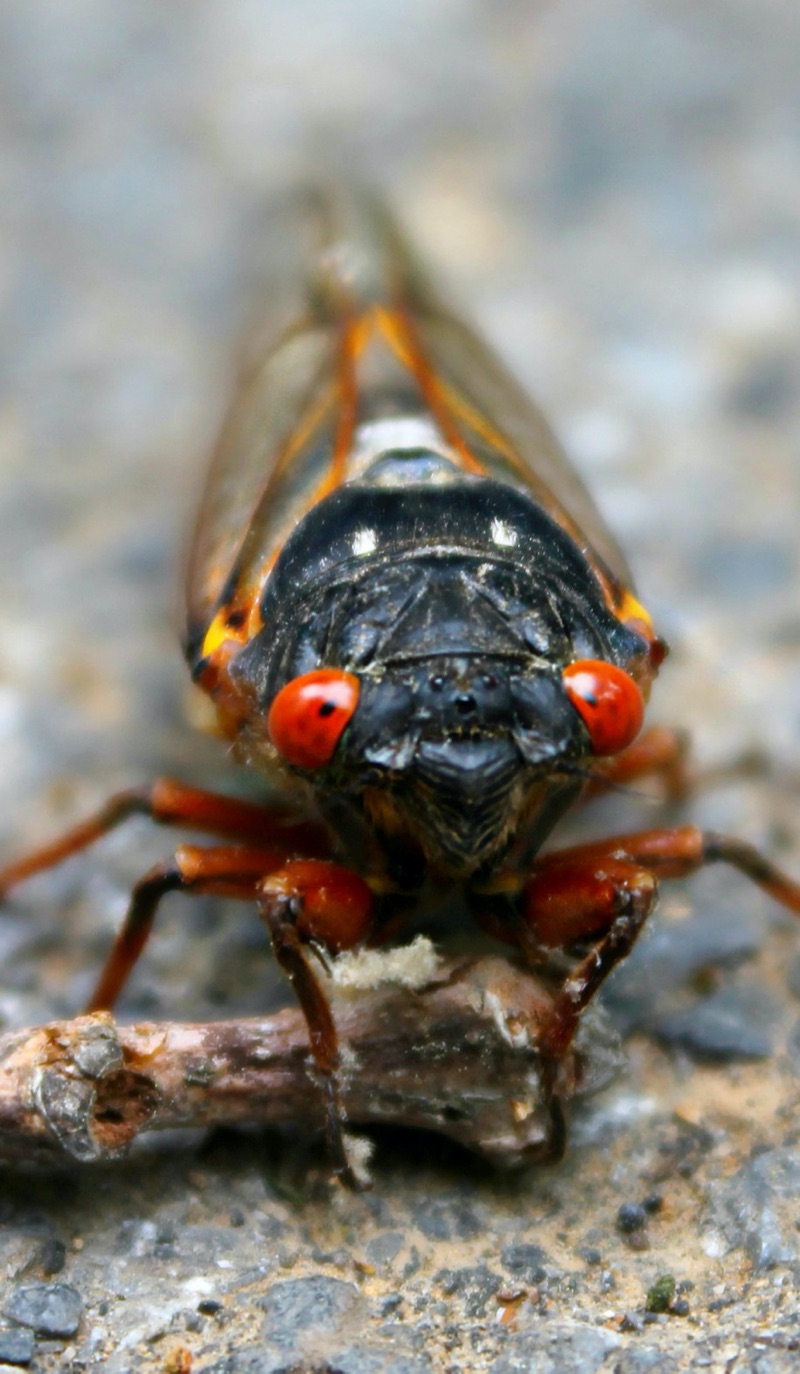
These photos of a Magicicada undergoing ecdysis (moulting) in Madison, NC are by photographer Heather James.
Click thumbnail images to see progressively larger versions of the images:
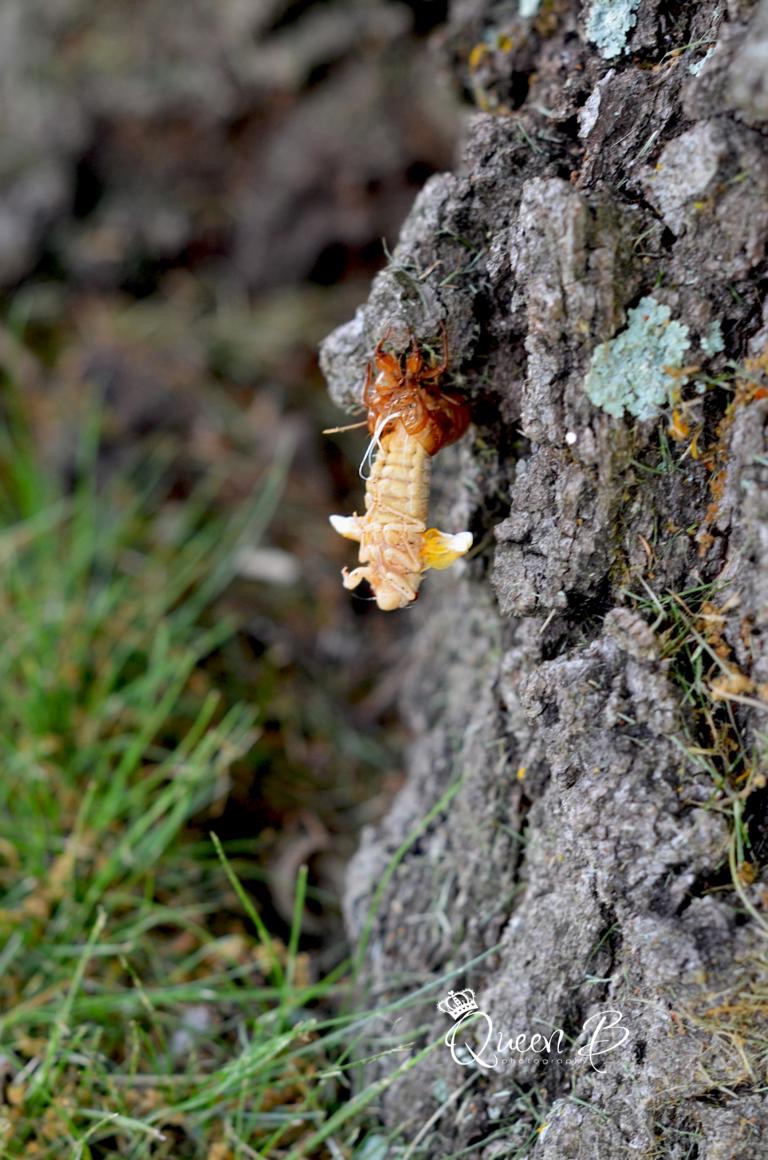
The “white strings” connecting the teneral (soft) adult cicada to its exuvia (shell, skin) are the old lining of the cicada’s trachea (the tubes through which it breathed).
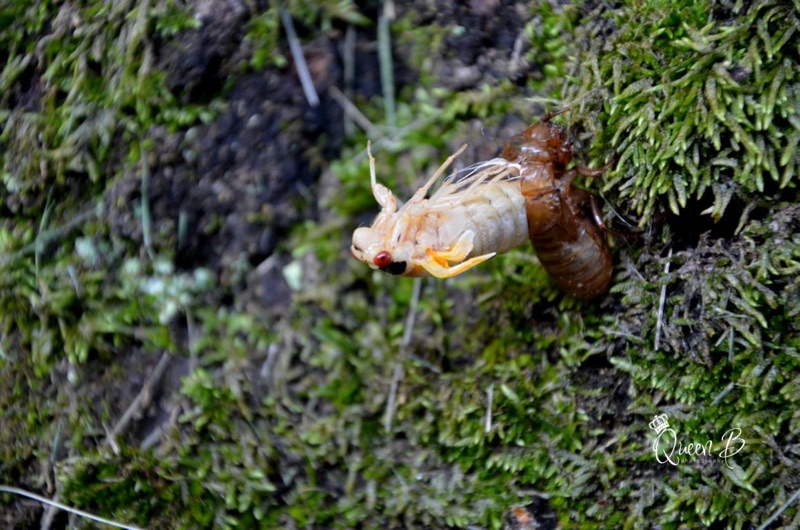
I didn’t see any nymphs emerge and undergo ecdysis tonight, but I did find plenty of cicada chimneys and nymphs trapped under slates.
Cicadas build chimneys above their holes, typically after it rains a lot and the soil becomes soft. The chimneys help keep water from rushing into their holes, and they keep ants and other menaces out.
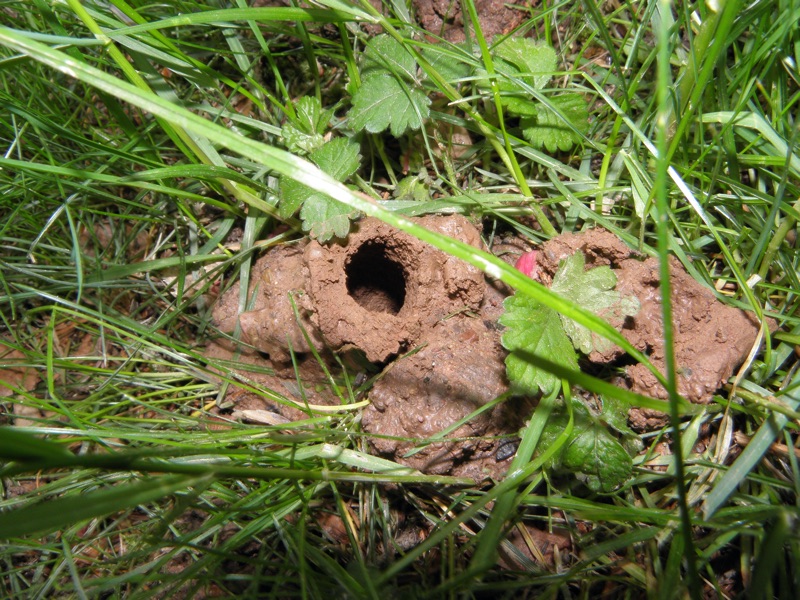
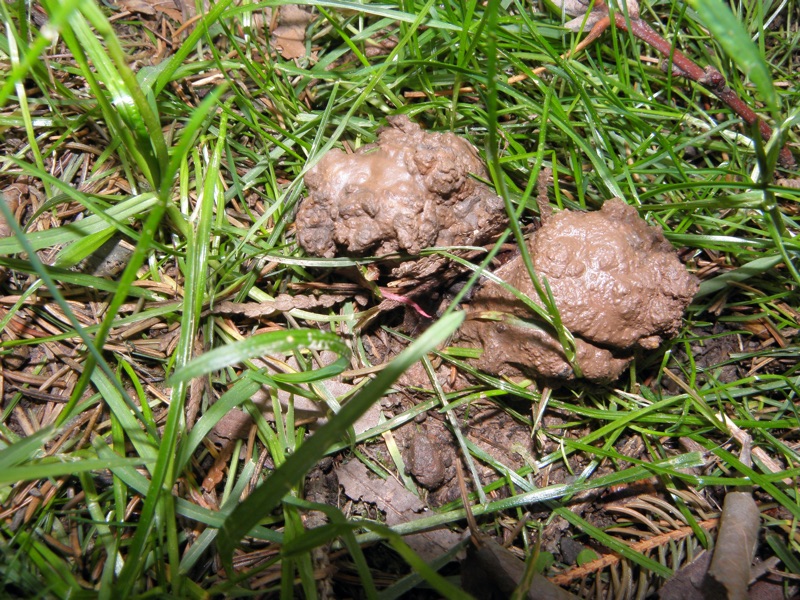
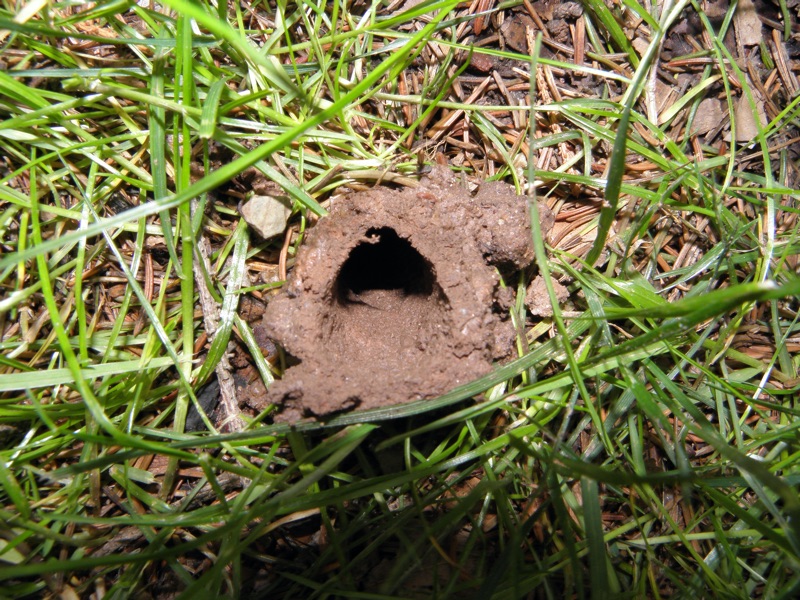
A good place to find cicada nymphs is under backyard slates (or similar objects that cover the ground). Flip over your slates and you might find a nymph tunneling their ways to the side of the slate.
Brood II 17 Year Cicada Nymph trapped under a slate from Cicada Mania on Vimeo.

Final update:
Here’s a map of all the towns reported in the comments:
View Towns where the Brood II cicadas emerged in 2013 in a larger map
Cicadas @ UCONN will eventually publish a complete and accurate map of the emergence.
17 year cicadas are about to emerge are currently emerging in New Jersey. I asked cicada super-expert Chris Simon of The Simon Lab at the University of Connecticut for some specifics. The information below is based on Dr. Simon’s notes.
Historically Brood II periodical cicadas have appeared in Atlantic, Bergen, Burlington, Cape May, Cumberland, Essex, Hunterdon (in the east), Middlesex, Monmouth (“Slight in eastern part”), Morris, Passaic, Somerset, Sussex, Union, and Warren Counties. Also, you can keep an eye on where cicadas are emerging in New Jersey (and report your own sightings) on Cicadas @ UCONN (formerly Magicicada.org), which has a live map of the emergence.
I’m personally very interested in periodical cicada sightings in Monmouth county — let us know if you spot any there.
Here are some specifics (don’t be dismayed if your town isn’t on the list — they still might appear in your town):
Atlantic County:
– Galloway
Bergen County:
– Alpine (Greenbrook Nature Sanctuary)
– Englewood
– Ft. Lee
– Oakland
– Wyckoff (near Lucine Lorrimer Sanctuary)
Essex County:
– Cedar Grove
– Essex Fells
– Livingston
– Maplewood
– Millburn (South Mountain Reservation)
– Montclair
– North Caldwell
– Short Hills (confirmed in 2013 already)
– Upper Montclair
– West Orange
Middlesex County:
– Edison (confirmed for 2013 – lots of exit holes near the Edison Monument).
– Fords
– Iselin (visually confirmed for 2013)
– Jamesburg
– Metuchen (confirmed in 2013 already)
– Perth Amboy
Mostly north of the Raritan River
Morris County:
– Flanders
– Kinnelton
– Madison
– Rockaway
Passaic County:
– West Milford
Somerset County:
– Bedminster (Pluckemin section)
– Belle Mead
– Bound Brook
– Far Hills
– Rocky Hill
– Warren
Union County:
– Fanwood
– Plainfield
– Summit (Confirmed – see a video)
– Westfield (Confirmed for 2013)
Warren County:
– Port Murray
BTW, what better way to celebrate Brood II in New Jersey like a Brood II tank top:

Here’s a review of the cicada news for April 2013.
First, periodical cicadas have started to emerge in North Carolina.
There are three cicada experiments you can be a part of! 1) Report cicada emergences to Cicadas @ UCONN (formerly Magicicada.org), 2) help Gene Kritsky with temperature related periodical cicada research, and 3) be a part of Cicada Tracker project.
Musician and philosopher David Rothenberg released his book Bug Music: How Insects Gave Us Rhythm and Noise.
Allen F. Sanborn and Polly K. Phillips have produced a Biogeography of the Cicadas (Hemiptera: Cicadidae) of North America, North of Mexico, which features maps for North American cicada species. This is an essential document for cicada researchers and enthusiasts.
I appeared in the April issue of Wired Magazine, The Cicada-Obsessed Prepare to Scratch a 17-Year Itch (and immediately started to diet and exercise).
News Articles about the Brood II emergence:
Return of the Cicadas is a documentary about the return of the Brood X periodical cicadas, by producer Samuel Orr. It is worth watching for for folks in the Brood II area so they know what to expect.
Take a look:
Yesterday I visited my family’s house in Metuchen, New Jersey. I looked in the backyard and found loads of cicada holes — a hole every 6″ to 12″. I was also clear that animals, like squirrels and raccoons, had been digging at many of the holes. Today I got a spade and gently dug around one of the holes. About 3″ down I found a Magicicada cassini nymph, about 1 inch in length, legs wiggling slowly, red eyes.
Here’s the hole:

Here is the nymph:

It’s clear that the cicadas are ready to emerge, and are just waiting for the temperatures to get a little warmer (to warm their bodies to around 64 degrees F/18º C). Today reached 72 degrees F. It will reach 77 F on Friday, and some will likely emerge. Saturday temperatures will be back down to 39 F. These cicadas will likely be confused for a little while.
More holes, many of which were widened by predators looking for a cicada snack!
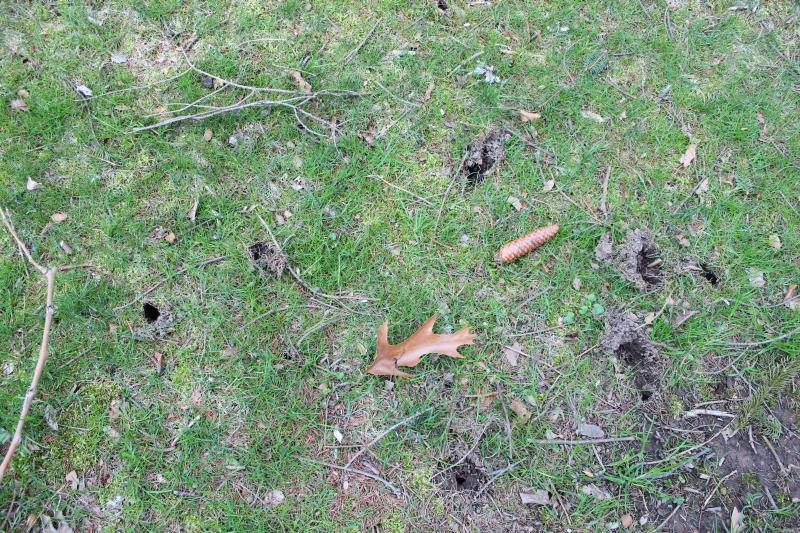
Also visit: updates on the emergence.
Gene Kritsky is one of the leading periodical cicada researchers. He’s asked that we help with his research regarding temperature and cicada emergence. He needs to know the date that cicadas first emerge, and then the date when they appear in large numbers in a given locality. To contact Gene with your findings, email him at cdarwin@aol.com.
Here are the details:
I wanted to alert you to a paper that I published with Roy after Brood XIV. I had placed sensors at cicada depths in Roy’s backyard, and also hung others in the area trees. We recorded the temperatures at 10 minute intervals at all the locations. I was trying to find a weather model to predict soil temperatures without using probes. This would be cheaper for people wanting to monitor an impending emergence. This research is based on what potato farmers do to track the growth of their crop.
We found that the average of the running three day and two day mean temperatures was a good predictor of soil temps.
The formula along with the extended forecast can be used to forecast soil temperatures. Once we get the 64º F soil temps and a nice rain we got emergences. I am hoping to test this model again this year, which in part is why I emailing you. What I need to know is the date that cicadas first emerge, and then the date when they appear in large numbers in a given locality. I will then use weather data to check the soil model. Can you ask readers to send me that info? Many thanks.
You can find more details on the model at:
http://inside.msj.edu/academics/faculty/kritskg/cicada/Site/Estimating_soil_temperature.html
An easier way of getting to the details is to go to www.msj.edu/cicada and click on estimating soil temperatures. That site will also link them to John’s mapping page, activities for kids, etc.
Thank you for your help.
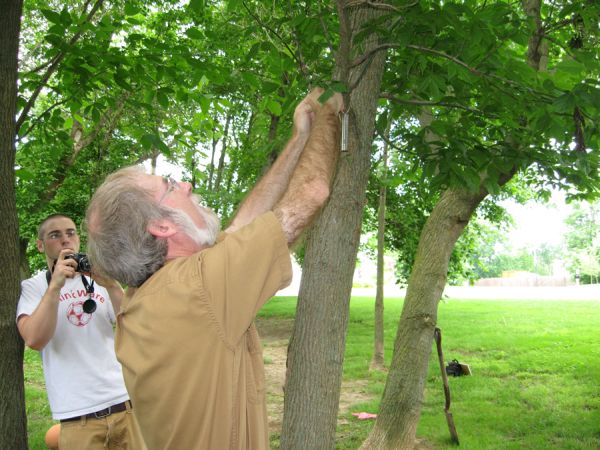
More info about Gene Kritsky: